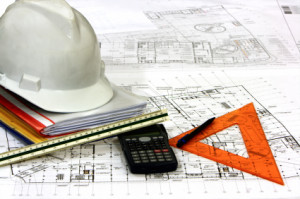I heard the Critical Path Method (CPM) defined once as a management technique for losing your shirt under perfect control! Not so funny if you have ever been at the management end of a tight timeline, in an old facility, around on-going operations with the concrete truck on its way and the formwork delayed because the backhoe is out of fuel!! Welcome to the world of construction; stuff happens! With construction nothing is ever really under “perfect control” but with the right systems in place you can get close. 
The Metrics: Just the knowing that a project is out of control is crucial to keeping a project under control. Put another way; isn’t it good to know you are going bankrupt as you are going bankrupt? At least then you can make some adjustments to avoid the disaster! The secret is in the knowing first and reacting second! Projects that spiral towards failure are those that can’t break out of reacting because the “knowing” is incorrect or it does not exist. Knowing what? Knowing where the key project metrics such as time, costs, resources, and cash flow are relative to a datum (the project plan). Good project managers will always know where these project metrics are because they are indicative of the immediate health of the project. In a project management cycle the metrics are Planned, Implemented, Measured (actual vs. budgeted) and then reacted to, correcting for deviations by making changes to the original plan. This is the project control cycle and it is continuous as a project unfolds. It is inevitable with all the things going on in construction; stuff just happens! Plans must change. The project control cycle will show the deviations to the plan which will help in making corrections as long as the original project plan was accurate. Comparing project “actuals” to a false plan will lead to poor corrections that can spiral the project more out of control. A poor plan for time, costs, resources and cash flow is sometimes worse than no plan. Good planning matters!!
Failing to Plan is Planning to Fail: Imagine a trip from Seattle to San Diego using a road map to Dallas, Texas. As you travel south the road signs point you in a direction that does not match the plan causing great consternation to the driver. Hasty plans make for troubling travel. Failing to plan a project (correctly) is like setting your project up for failure. We have all been at that place where the physical project must start because time is tight (it always is) and “there is no time to waste.” Myself, I would much rather “lose” a few weeks at the upfront in properly planning a project and regain that time many times over as the project unfolds. All good projects are built several times before they are finally physically built. Absolutely! Poorly planned projects are often found spiraling downward into a reactive mode which will just add to the lost time, increased costs, inefficient implementation of resources and negative cash flow. As the saying goes….failing to plan is planning to fail!
Cost Control: In the project control loop the projects actual costs are measured against budgeted costs. This measurement will show the deviations in planned vs. budgeted which is key to controlling a projects cost. With a well thought out “cost plan” (the budget) the deviations will be manageable and adjustments can be made to minimize the impact on the final cost of the project. If a project budget does not exist or is poorly thought out, then controlling costs is difficult (someone please explain this to the executive branch of our federal government). At the heart of and crucial to controlling costs is an accurate cost estimate which translates into a cost budget. A cost estimate then is very important to cost control. The four phases of cost estimating and in turn accurately budgeting a projects cost are:
Scoping Phase: The best approach to scoping a project is to think through building the project from the ground up. Think like a contractor and include the scope of means and methods for executing the work as well as the scope issues relative to the context (location, weather, traffic, safety measures, economic conditions, availability of resources…) of where the project is built. Construction scope is much more than that which is spelled out in plans and specifications. Anticipating context and execution scope are often times overlooked in budget estimating. Scope, scope, scope!! The best estimators that I have ever worked with are those that come from the field because they know scope from the ground up. A prerequisite to construction estimating and budgeting should be the working at a trade to learn the field end of construction which is so important to capturing correct scope. Scope is the foundation to every other phase of construction estimating. If scope is wrong a project budget is wrong. Enough said!
Quantify Phase: Quantity take-off is the converting of all tasks of scope into quantities so that they can be priced. Mistakes in quantities can be significant. Common errors are generally with math or converting units from one measure to another. If the scope is well thought out, then quantities will follow. Quantities should always be checked and double checked.
Pricing Phase: Pricing is the application of accurate unit costs to the project task quantities. Common mistakes are applying unit costs where the units are different from the quantity take-off (i.e. Cubic Yards vs. Cubic feet). Note also that a project’s overall cost goes well beyond just the direct costing of direct activities. A project cost should also include the indirect costs such as site specific overhead (indirectly attributable to all the project direct costs and can be 5% to 15% of project cost), home office overhead, profit, bond, sales taxes and even certain contingencies.
Double Check Phase: All good cost estimates are checked and double checked prior to establishing it as the project budget or bid price for a project. An estimate double check is always most effective by putting the project down for a day and return with a fresh mindset.
Keeping Your Shirt Under Perfect Control: At the foundation of project cost control is an accurate cost estimate. In actuality the foundation to any of the project metrics of time, costs, resources, and cash flow is also an accurate estimate. Time schedules, resource schedules and cash flow plans all come from a well thought out cost estimate. Building a project before a project is built! Having a complete and accurate plan for a project is the secret to keeping your shirt under perfect control!



